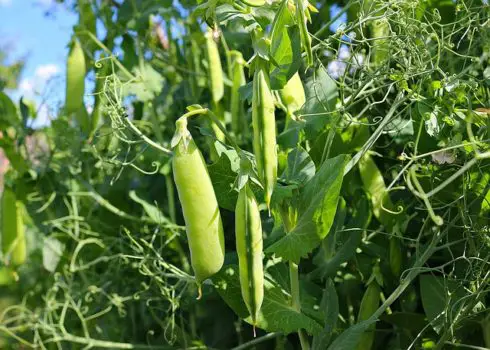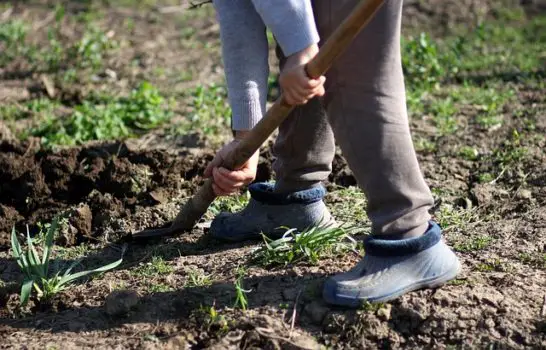I’ve heard the phrase cover crop and green manure used for vegetable gardens. I wanted to research the idea and here is some information I found out about it. It looks pretty simple and seems to be really effective and a good idea to build up your garden naturally. However there are some cautions and things to think about when applying this technique to your garden.
What is a cover crop and green manure
A cover crop is a crop sewn to cover up, or use the ground that you don’t have in production. It’s a technique used to hamper weed growth, attract beneficial insects, aid in water retention, add nutrients, and bring up nutrients from lower in the soil. Cover crops are generally used on larger plots of ground, but is being used more and more on smaller garden plots and grow boxes.
The initial crop is called a cover crop. When that crop is tilled under it becomes green manure. This green manure adds humus and nutrients to the soil. This method creates a good loamy soil full of nutrients ready for plants and seeds.
Different Cover Crops
There are a whole variety of cover crops available to use. Generally the cover crops break down into two basic types, legumes and grasses.
Legumes are nitrogen fixing plants. The legumes have nodules on the roots of the plants. These nodules work in conjunction with bacteria in the soil to take nitrogen from the air and fix it in the nodules on the roots of the plants. The nitrogen is transformed through this process to become useful for plants. When the cover crop plants die and decompose it leaves this beneficial nitrogen in the soil available for nitrogen using plants.
The grasses are a hearty and easily grown cover crop. Caution should be used when planting grasses as a cover crop. Sometimes if you don’t process the grass at the right time it can become more of a nuisance then a benefit. Winter wheat and winter rye can leave a pretty extensive root structure that is tough to deal with. Also many of the grasses will reseed themselves if you don’t mow, or till them in before they go to seed. You might end up with a problem with all this grass growing where you don’t want it to.

Suggestions of Cover Crops
-Legumes
- -vetch
- clover
- beans
- peas
-Grasses
- -annual ryegrass
- oats
- rapeseed
- winter wheat
- winter rye
- buckwheat
Uses for a cover crop and green manure
Both grasses and Legumes will work well depending on what you want to do. Here are some benefits of using a cover crop:
- Add structure to sandy soil
- Adds and helps retain nutrients
- A deep rooted cover crop can be used to break up hardened soil
- Draws up nutrients from deep in the soil allowing plants to utilize the nutrients
- Prevents soil erosion
- attracts beneficial insects such as bees, butterflies, and other polinators
- Aids in water retention
- Helps with weed control
- Adds visual interest and a pleasing look to your garden
How to plant a cover crop and turn it into green manure
Sewing a cover crop is relatively simple. The ground needs to be prepared by clearing the ground of debris, rocks, dead vegetation, etc. Work the ground with a rake or spade as needed.
The seed can be broadcasted over the area. You can use a simple hand broadcaster, the kind used to spread fertilizer on your lawn. You can also just broadcast with your hand spreading it as evenly as you can.
Once you have it scattered you rake it in, making sure the seeds have good contact with the soil. Lightly water in and the plants should germinate.
When you have your cover crop germinated and growing, it’s just a matter of maintaining. Water as needed.
Make sure you keep an eye on crops that you don’t want to reside themselves becoming a nuisance in the long run.

Once it is time to turn the cover crop into green manure it’s a simple process. When sewing a cover crop in the fall the first frost or two will kill cover crop plants. Then you can simply till, spade, or plow the crop in and incorporate it into the soil.
If you are growing a grass you may want to mow or cut the grass before you till it in. The grass might be a bit too much volume for your ground, or you may want to keep the grass from reseeding itself.
When tilling in the spring you need to incorporate the cover crop into the soil with a tiller, spade or plow when you decide.
When to plant a cover crop
Timing is another consideration when planting a cover crop. Often home gardeners will use the cover crop method in the fall. Be sure to start the cover crop 3-4 weeks before the first expected frost.
Some home gardeners will use a cover crop in the spring before they plant the warm/hot weather crops like peppers and tomatoes.
If you grow a spring cover crop you need to watch carefully. Cover crops can go to seed and reseed themselves causing a problem and becoming a weed.
You can basically plant a cover crop whenever you desire. You just need to be sure to manage it well. Consider the first expected frost, or manage the crop before it becomes a nuisance or weed.
As a general rule most home gardeners will want to plant in the fall about 4-6 weeks before the first expected freeze, and in the spring before the warmer season crops are panted.
If you are starting a new garden plot you may want to plant a few sessions of cover crops and till it into the soil. This can aid in adding nutrients, soil loam, and water retention to your garden plot.
Choosing a cover crop
Choosing what crop to use just takes a little research on what would be best for your garden.
If you are lacking in in nitrogen, legumes would be a good way to go. If you need your hard ground broken up maybe a more deep rooted cover crop could break it up.
If you have a weed problem, grasses might be a way to suppress the weeds. If you have sandy soil the root structure of grass may aid in building the humus or loam of the soil.
When making a choice on what cover crop to use you may want to try a small spot instead of planting a large area. Try it out first and see how it works out. You can try a few different cover crops and see which works out the best.
Summary
In summary, it looks like planting a cover crop and turning it into green manure is a really viable way to help out your garden soil. It doesn’t appear to be very difficult if you plan ahead.
You do need to plan ahead to avoid making a cover crop a nuisance. Using a cover crop method has been used successfully by larger farms, and is increasingly being used by the home gardener.

